WHAT IS LIFE?
with Richard Dawkins
On the 20th of May 2019, the publishing house Fri Tanke arranged a symposium in Stockholm together with The Royal Swedish Academy of Science and the Swedish Foundation for Strategic Research. Fri Tanke’s CEO Christer Sturmark was the moderator of the evening, which consisted of several discussions between scientists and intellectuals from various fields and research areas. The symposium offered the audience fascinating exchanges of knowledge and arguments on exciting topics. This article reflects some of the highlights.
The heritage of Erwin Schrödinger
It has been 75 years since the famous physicist Erwin Schrödinger published his book “What Is Life? The Physical Aspect of the Living Cell“. On stage are Karl Sigmund, Professor of Mathematics at the University of
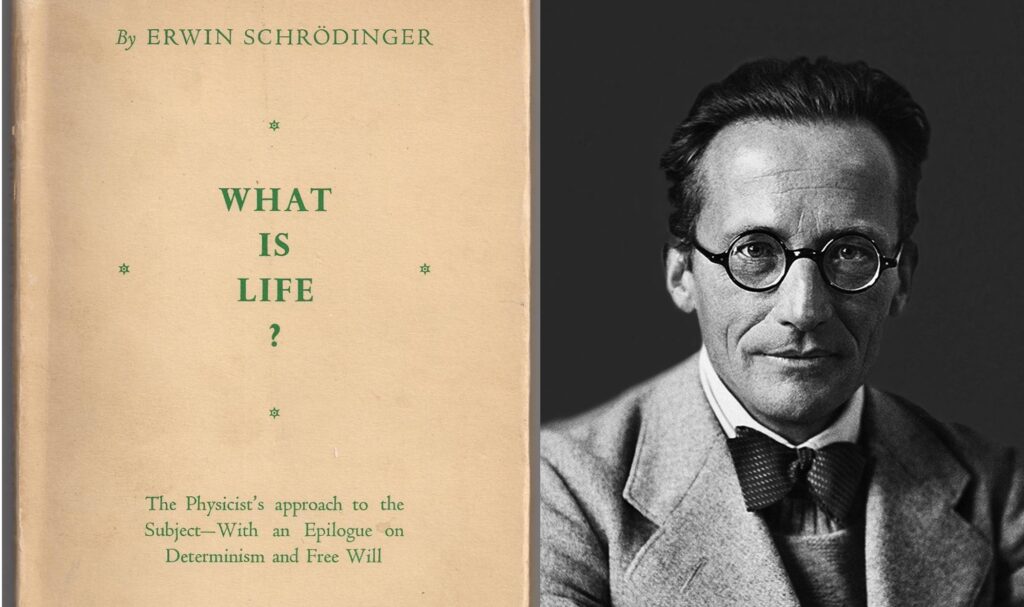
One on one with Richard Dawkins
Richard Dawkins is an author, evolutionary biologist, professor, fellow of the Royal Society and of the Royal Society of Literature and world famous atheist. He was the poster name of this evening and this discussion was a one-on-one with moderator Sturmark.
They started of by discussing how much physicists, just like Erwin Schrödinger, can contribute to biology. Dawkins reminded the audience that Francis Crick was a physicist who moved effortlessly into biology and solved the biggest problem of the 20th century – discovering the structure of the DNA molecule. There are also many more after him who have contributed to the field of biology, even though they have a foundation in physics.
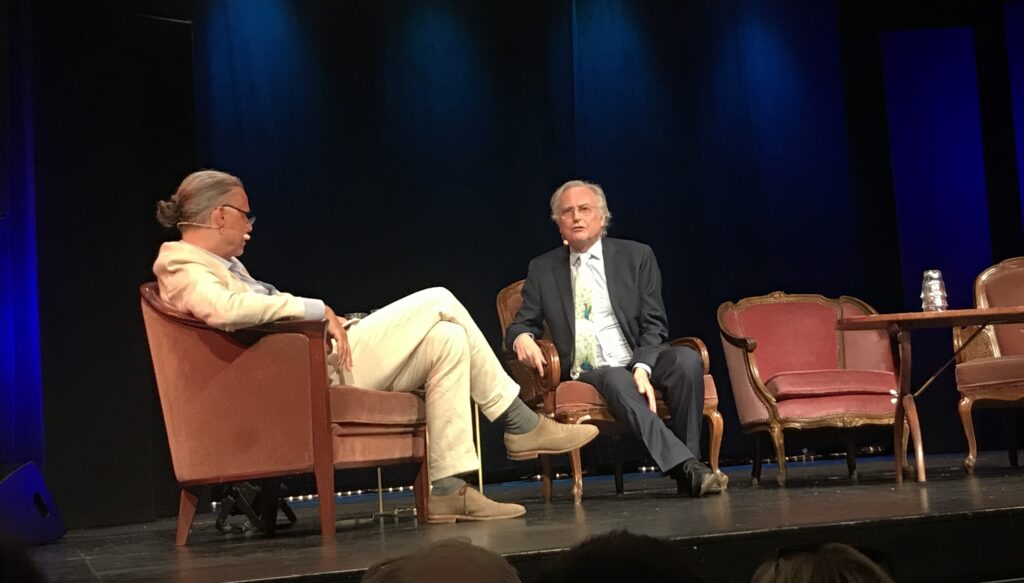
Sturmark asks Dawkins about convergent evolution – a problem being solved in species of different lineages, with the same or different solutions, independent of each other. Dawkins lights up and express how he loves this phenomenon. He takes the eye as an example, and says that it has evolved dozens of times independently throughout the history of evolution, but has evolved in different shapes and forms. Humans and octopuses both have eyes, and they look superficially the same, but the anatomy is different. In the human eye, the nerve fibers route before the retina, which causes the blind spot where the nerves passes through the retina as no photoreceptor cells can be located on that spot. In the octopus eye on the other hand, the nerve fibers route behind the retina and therefore do not disrupt the retina.
After a discussion on evolution they move on to atheism, and Sturmark asks about the “New atheism” as the movement Dawkins often is said to be one of the leaders of, is called. Dawkins explains that it wasn’t anyone of the four horsemen (R. Dawkins, S. Harris, D. Dennett, C. Hitchens) who coined the name, but he has no objection to it. He continues to say that there is really nothing new to what he says on the topic. There is nothing in it that one wouldn’t find in what Bertrand Russel said, and that’s fine because what more is there to say? The thing is that you have to keep saying it because nobody listens!
Language and communication
Dawkins is now joined on stage by author Torbjörn Elensky, Åsa Nilsonne, Professor in Medical Psychology at Karolinska Institute and Abhijit Mahabal, Ph.D. in Cognitive Science and a decade long employee at Google, working with languages.

The panel starts discussing the origin of language in the history of evolution, but straight away they run into the problem of defining language. Is language the same as communication? Dawkins says that very large numbers of animals communicate and give signals that influence the behavior of other animals, but he does not want to call that a language, as it lacks syntax. Mahabal on the other hand argues that even without grammar, by just stringing together a few words, people will understand pretty well what is being said.
They move in to a discussion on whether or not it is possible for an individual to think, reflect on abstract concepts and draw conclusions without a language. Dawkins says that many animals plan their next action without a language, so it should be possible. He goes back to the origin of language, describing it as being more difficult to understand than anything else in biology. He sees no general agreement
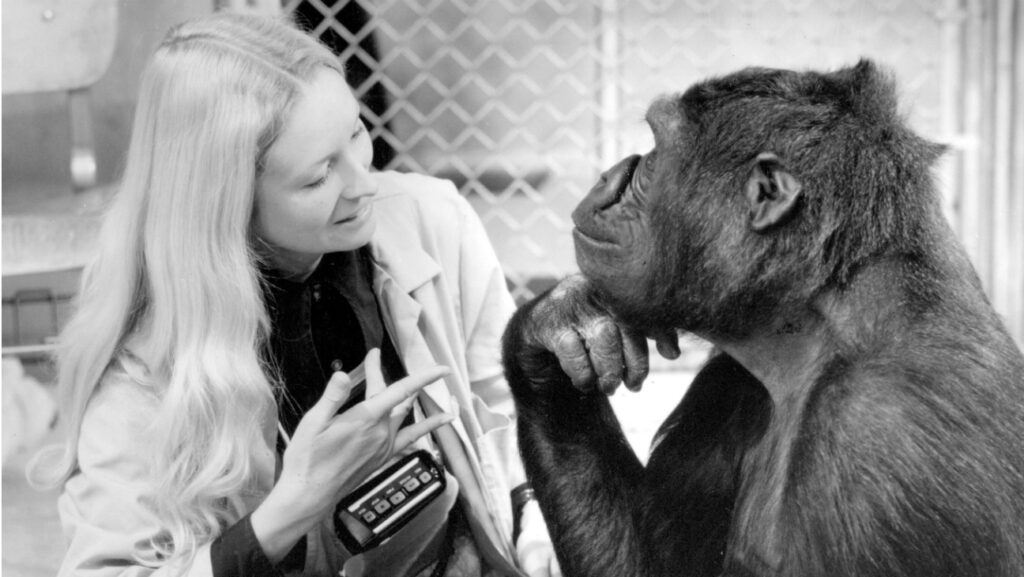
Mahabal is asked by Sturmark why it is so difficult to teach computers human languages. He explains that one pain point is the fact that a single word can have several meanings. Many nouns can also be used as verbs, like the word elbow for example, which we instinctively think of as a noun, but to elbow someone is correct as well. The same goes for jail, belt and many other words. Also, if you take the word shadow, it means the effect of something physically being in the way of the light, but in a different context, you can say that someone grows in the shadow of the very famous parent. Mahabal finishes of with an example of coffee. If we say let’s have a coffee, but then instead drink a cup of tea, there’s nothing weird about that. But if we order a coffee and instead is served a cup of tea, we wouldn’t be happy about it. The incompleteness of specification is important in language, because it means that it’s enough to say just a little bit and the other person knows exactly what we mean, while to get a computer to understand you have to spell everything out.
Artificial intelligence and consciousness
For this discussion, Sturmark welcomed three scientists to the stage. Ulf Danielsson, Professor of Theoretical Physics at Uppsala University, Robert Goldstone, Professor of Psychology and Brain research at Indiana University Bloomington, Todd Sacktor, distinguished Professor of Physiology, Pharmacology, Anesthesiology and Neurology at State University of New York Downtown Medical Center.
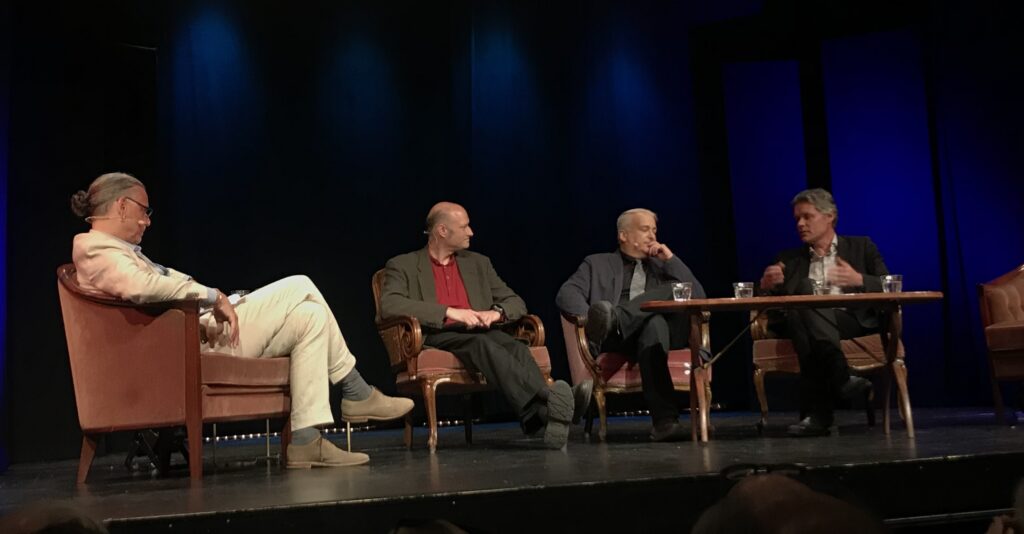
The panel quickly split up in two sides. On one side, Sacktor argued that consciousness is a result of neurons firing in the brain and that there is no theoretical reason why we wouldn’t be able to simulate it and reproduce it artificially when we have come to understand it better. Danielsson on the other hand argued that no matter how advanced computer we build, based on today’s technology, we can still understand everything that goes on inside that computer, and describe it with physics. Those equations that describe the computer do not predict the appearance of consciousness and cannot describe it. Therefore he draws the conclusion that a computer with consciousness cannot be built. He compares the idea of a conscious computer to believing in ghosts.
The next part of the discussion turned toward the question on whether or not intelligent and conscious computers should have rights, possibly the same as humans. Also this time the panel split up, with Goldstone on on side and Danielsson on the other. Goldstone said that he hopes that homo sapiens will be enlightened enough so that if there are machines that proves to be as adaptive, thinking and reactive to us as a cultured in our community, we would give them rights. Danielsson claims that this would be extremely dangerous. He says that we then would have to prove that the machine indeed is conscious. As long as we only look at behavior and outer characteristics we should assume it to lack consciousness, and not feel any compassion for it.
Danielsson continues, saying that we have to value what’s human and make sure that in healthcare we have real human beings taking care of people. He paints a theoretical scene, where a really advanced self-driving car that has been given moral rights, crashes with a human on the street. When the ambulance gets there, they have to quickly decide if they should save the human or the computer in the car. It’s an ethical dilemma arising from giving the machines human rights.
Human enhancement
The final discussion of the evening included Ingrid Dunér, Ph.D. student of History of Ideas at Lund University, Ulf Ellervik, Professor of Organic Chemistry at Lund University, Christina Moberg, Professor of Organic Chemistry at KTH, as well as Richard Dawkins.
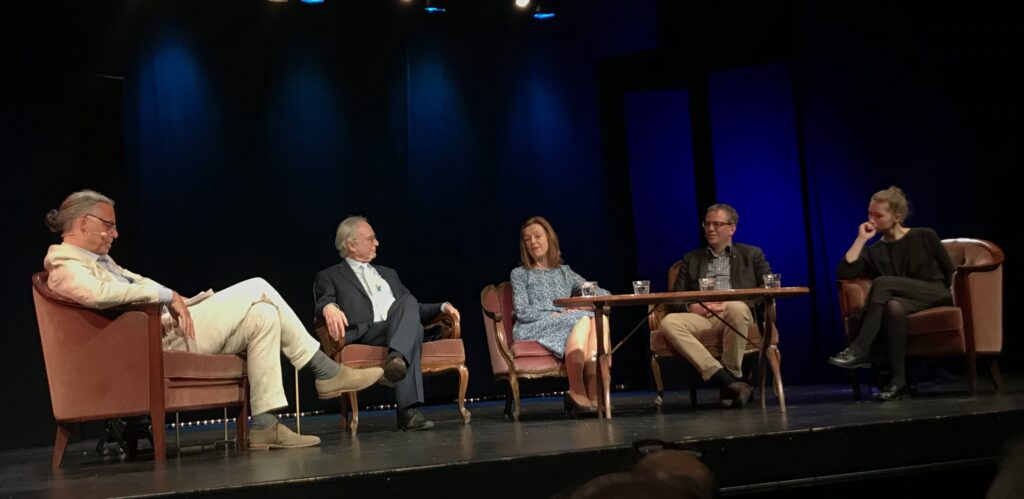
The panel starts of by discussing human intervention of evolution. Dawkins says that humans have been doing it for thousands of years by artificial selection. The new possibility that has arisen is to do it by mutation. He wonders though, if we really want to use mutation to change humans when we haven’t used artificial selection on humans, even though we’ve used it to change dogs, cows, pigs, wheat, cabbage and many other things for so long. Dunér comments that when a technology exists, it seems difficult for humans not to use it. She adds that banning the technology is an ethical choice in itself, as the amazing opportunities of it could cure diseases and end suffering for many people.
Dunér is studying Julian Huxley and explains for the audience who he was. Huxley was an evolution biologist who was active in the 1920s, 30s and 40s. He was fascinated in building an ideology for the future based on Darwinism. He was very pro human enhancement, and he called his ideology transhumanism. He said that evolution is a process and humans are not static in it; we came from somewhere and we are going somewhere. Huxley wanted us to not only see where we were going but also make us go where we want to go. Controlling evolution was a big thing for him. He saw the human as an unfinished product.
The symposium was recorded by SVT and will be aired on Kunskapskanalen.
Please visit Fri Tanke for more information and future events.